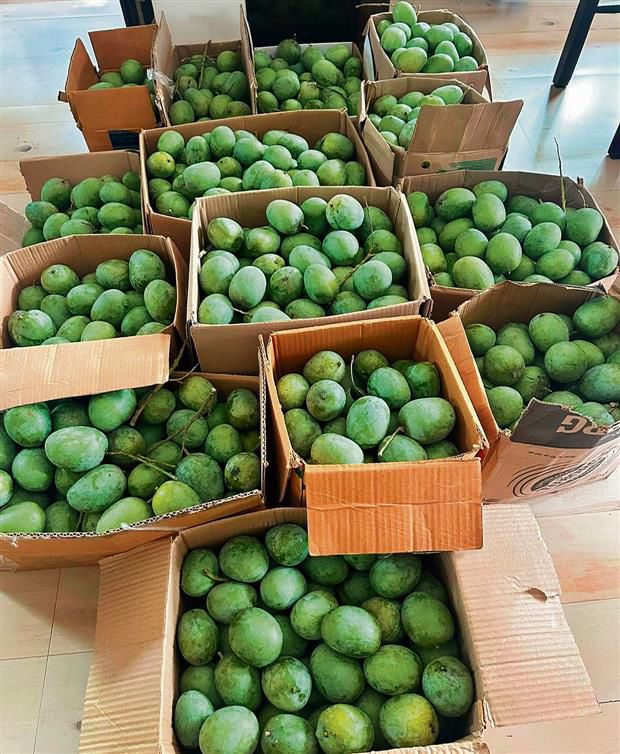Raghav Guleria
Dharamsala, July 17
The mango season is fast heading towards its closure, but the Department of Horticulture is yet to wake up from a deep slumber.
The minimum support price (MSP), vital for the economic security of farmers, is yet to be announced, and the unusual delay exhibits the authorities’ disregard for the genuine concerns of the farming community.
Sources reveal that the department had submitted the proposal for MSP for approval, but the officials concerned in the government were busy with the elections.
The step-motherly treatment to the ‘the king of fruits’ is beyond anybody’s understanding. Mango is cultivated in the lower belt of Himachal Pradesh, especially Kangra district where it is grown on around 21,600 hectares. In addition to the improved varieties, mango groves of the local variety are a common sight in almost every village of the district.
Mango has the potential to be a source of income for the district’s farming community, but due to the absence of timely procurement, storage or preservation of the fruit, the growers have not been able to get the maximum possible profits for the yield.
These days, tonnes of mangoes can be seen rotting in the fields in the absence of a forward linkage. People living close to the highway are seen selling them for at low prices. Pawan, a resident of Daulatpur village, who sells the fruit near the Kangra tunnel, is one among several vendors who earn a livelihood by selling mangoes on the highway. The price ranges between Rs 40 and Rs 100 a kilo.
Rohit Samuel, a mango grower living in Kangra town, said, “This year, the mango crop has been exceptionally good. Unlike last year, no fungal infection to the flowering buds was reported due to timely rains in spring. However, the size of the fruit was comparatively small because of the exceptionally hot and dry summer and scarcity of water.”
“A 150-year-old langda variety tree, planted by my great-grandfather, broke an all-time record by producing 500 kg of fruit,” he added. According to him, pollination using bees — kept in boxes below the tree — worked wonders for him.
Officials attribute this increase to favourable temperature and weather conditions during the flowering period, in contrast to last year, when rainfall adversely affected it. The harvesting season for mangoes lasts till July, with some late season varieties being harvested in August as well.
Talking to The Tribune, Kangra Deputy Director (Horticulture) Dr Kamal Sheel Negi said the overall mango production in India is lower due to weather-related reasons this year. “But the produce here is good and we expect that it will be above 23,000 MT compared to 16,800 MT in 2023,” he said.
According to him, the hybrid mango varieties — Pusa Arunima, Pusa Lalima, Pusa Surya, Pusa Shreshtha, Malika and Chausa — are cultivated using high-density plantation (HDP) techniques. These varieties start bearing fruit in just three years, compared to the six to seven years required for traditional varieties.









